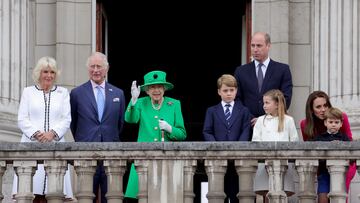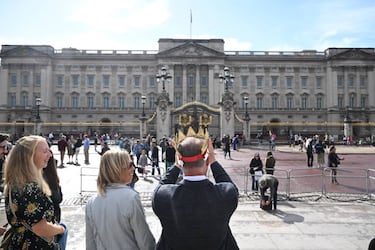What was the net worth of Queen Elizabeth II?
When one thinks of the British royal family, one could imagine immense wealth, they did once sit at the top of a global empire. But one would be surprised.

King Charles III has assumed the throne of the United Kingdom with the passing of Queen Elizabeth II and now he will inherit her vast wealth. However, that fortune is not what one would necessarily expect.
Related: Nostradamus predictions in 2022
While the royal family does control an immense estate that includes numerous properties and assets, they don’t belong directly to the person that wears the crown. Instead they are held and managed by “The Firm” the nickname given to the senior members of the royal family.
The official name of the business enterprise is “Monarchy PLC”, which oversees the Crown Estate, is estimated to be worth $28 billion according to Forbes. Profits from the Sovereign Grant, as it is also known, provide part of the income for the British royal family and a fair amount for the British Treasury.
But the Queen did have her own personal wealth. It is estimated that she will leave behind somewhere around $500 million, with Charles inheriting the lion’s share.
Also see:
Queen Elizabeth II was worth $500 million
Mind you, half a billion in the bank, in assets better said, is not chump change by any stretch of the imagination. She personally held her own investment portfolio, primarily in British blue-chip stocks, along with artworks, jewelry and an incredibly valuable stamp collection according to the Sunday Times. the Royal Philatelic Collection, composed of UK and Commonwealth stamps, is valued around £100 million.
She also owned Sandringham House and Balmoral Castle, her personal residences, in addition to other properties.

When her mother passed away in 2002, the Queen Mother bequeathed her entire estate to Queen Elizabeth II. It included works of art and the contents of her house, all of which was valued at roughly 70 million pounds according to the BBC. However, she gave the most important works of art to the Royal Collection to be held in trust for the nation.
In a special agreement worked out with former Conservative Prime Minister John Major in 1993, inheritance from a ‘sovereign to sovereign’ is exempt from tax. The reasoning behind the exemption was avoid the royal family’s wealth being eroded over time.
This carveout applies to what the consort of a sovereign gives to their spouse the reigning monarch, which would have applied to the portion of the estimated $42 million estate the Duke of Edinburgh left to his wife.
Where the royal family’s income comes from
Profits from the Crown Estate are split between the royal family and the British Treasury with the former getting 25 percent and the latter 75 percent. The income the royal family receives from the Sovereign Grant is for the sole purpose of covering official expenses such as costs for housekeeping, maintenance, payroll, security and travel as well as IT expenses.
The latest numbers as reported by Forbes put profits at $475 million, which translated to a little less than $120 million for the royal family to keep the money-making machine rolling. It is estimated that prior to the pandemic they contributed $2.7 billion to the UK economy each year.

Mainly this is through all the tourists that come to visit but also free media coverage for the nation and boosts to high-end brands. Their stamp of approval for a product can increase revenue for that brand by up to 10 percent. However, the royals cannot personally benefit financially from this influence.
Privy Purse money, funds for personal expenses, for the royal family comes from two estates, the Duchy of Lancaster and Duchy of Cornwall.
Related stories
An allowance from the Duchy of Lancaster supports the private expenses of the reigning monarch and his or her extended family. In its latest financial report, the Duchy produced a net surplus of 24 million pounds.
The Duchy of Cornwall provides an allowance for the heir apparent, which is now Prince William, and his family. In its latest financial report, the Duchy produced a net surplus of 23 million pounds.


